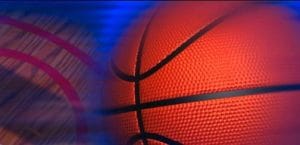Native American athletes have helped shape South Dakota basketball for over a century. In the early 1900s, Lakota boys from St. Francis Mission played a fast, improvisational style that transformed the game from slow and methodical to up-tempo and dynamic.
Teams like the Sioux Travelers barnstormed across the country, bringing Native athleticism and flair to wider audiences.
“Native teams helped change basketball from the much slower, methodical game it was in the early 1900s into the fast-paced spectacle it is today,” said Wade Davies, professor at the University of Montana and author of Native Hoops: The Rise of American Indian Basketball 1895-19701.
Barriers and Exclusion in South Dakota High School Basketball
Despite their talent, Native teams faced exclusion from the South Dakota High School Activities Association in the 1920s. Indian boarding schools like the Rapid City Indian School were denied membership because rules barred nonpublic schools, including federal Indian and Catholic mission schools. Racism and federal assimilation policies also played a role in keeping Native teams out of mainstream competition.
Community, Culture, and Modern Native Role Models
Basketball is woven into daily life on reservations.
“The Oglala have subtly woven [basketball] into their lives so that it’s expressed in a wide range of ways, from the simple joy of watching players excel, to offsetting the sting of poverty and racism, and in everything between,” said Alan Klein, professor at Northeastern University and author of Lakota Hoops: Life and Basketball on Pine Ridge Indian Reservation.
Tori DePerry played for the University of South Dakota women’s basketball team.
“Competing at the highest level of competition as a Native American athlete means resilience and perseverance for all generations,” she said on goyotes.com. “We have come a long way as Native Americans, and putting on my jersey every night and being able to play the sport I love as a Native American athlete makes me feel proud to be Indigenous.”
Girls’ Basketball and the Spirit of SuAnne Big Crow in Pine Ridge
Girls’ basketball has deep roots and remains a powerful force in Native communities. In 1989, the Pine Ridge Lady Thorpes, led by SuAnne Big Crow, won the Class A state championship. Big Crow is remembered as one of the state’s greatest players, known for her skill, leadership, and courage. SuAnne Big Crow died at age 17 in a car accident on February 9, 1992, while traveling to accept an award during her senior year of high school.
Her legacy lives on in the Spirit of Su Award, presented each year by the South Dakota High School Activities Association to a senior player who demonstrates athletic ability, leadership, character, sportsmanship, and academic achievement.
Lakota Nation Invitational and Dakota Oyate Challenge: South Dakota’s Premier Native Tournaments
The Lakota Nation Invitational in Rapid City is more than a basketball tournament. It celebrates culture, language, and community, featuring wrestling, archery, Lakota language competitions, and art shows.
“The tournament was started because of the racism,” said founder Bryan Brewer in an interview with South Dakota Public Broadcasting. “We want to stop the racism. We want our children to get along. We want to educate our children, Indian and non-Indian children, that we’re all brothers and sisters.”
For smaller schools, the Dakota Oyate Challenge at the Corn Palace in Mitchell offers a similar opportunity.
“We organized this tournament because everybody wanted to be a part of the Lakota Nation Invitational, but LNI was for Class A schools,” said Silas Blaine, Dakota Oyate Challenge chairman and Wakpala School superintendent, speaking to SDPB. “We produced the Dakota Oyate Challenge, allowing smaller schools to play in a similar tournament.”
The DOC includes boys’ and girls’ basketball, archery, hand games, and college and career events.
“It is exciting playing against other Native hoopers, especially the ones we play throughout the season. Native basketball is entertaining. It involves an elevated level of basketball IQ,” said Ashytn Kills Small, a senior guard at Wakpala told SDPB.
Legacy Teams and the Future of Reservation Basketball in South Dakota
Historic teams like the 1959 Cheyenne-Eagle Butte Braves, who won a state championship, continue to inspire new generations. Coaches like Eldon Marshall at White River High School serve as role models.
“Be the example your kids need to see, so they can believe in themselves,” Marshall said on NDNSports.com. “Growing up in Rosebud, basketball was something for a kid to do when there wasn’t much to do, and it became something that I really loved to do with my friends.”
More Than Just a Sport
Basketball on South Dakota’s reservations is not just a sport. It is a force for community, identity, and resilience. Even as the season ends, the game’s legacy continues to shape lives, bridge divides, and offer hope to new generations across the Plains.





